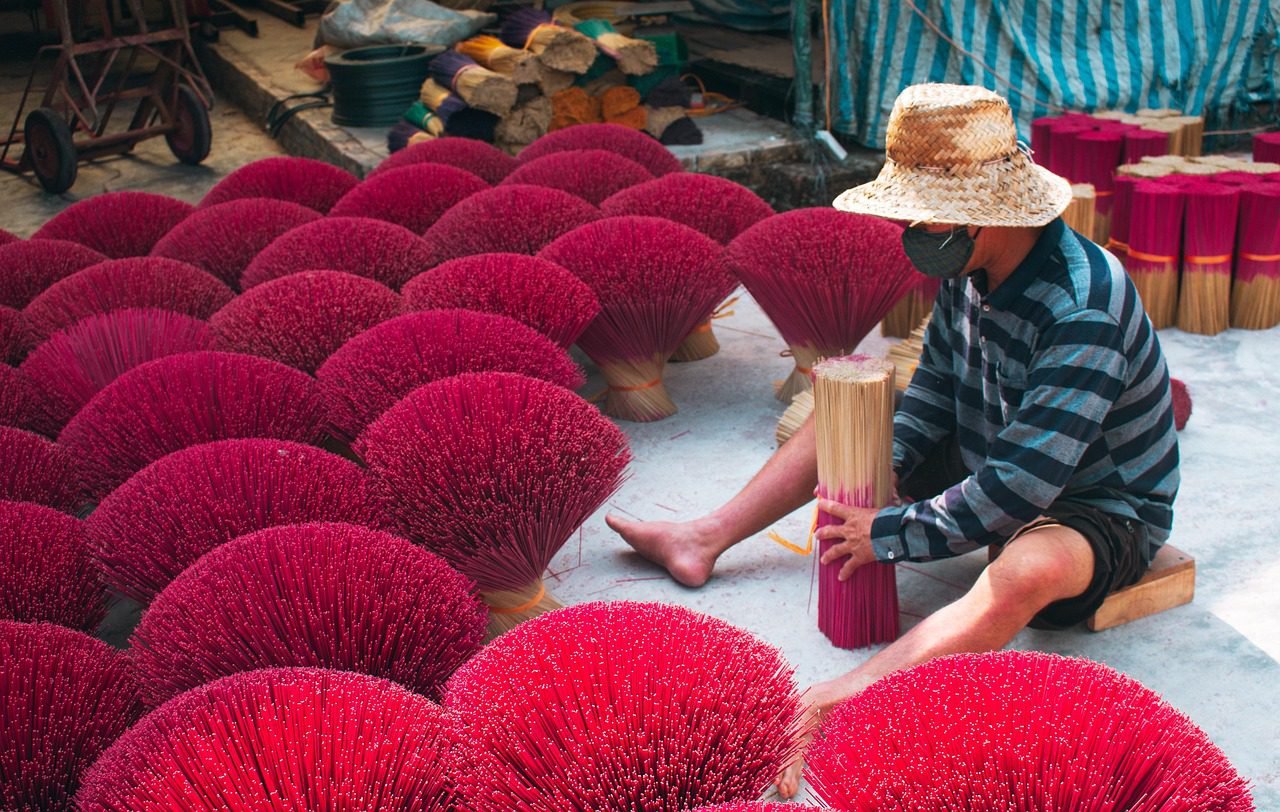The Ultimate Guide to Food Tours in Vietnam: A Complete 2025 Travel Companion

Whether you’re a seasoned foodie seeking authentic local experiences or a curious traveler wanting to explore beyond tourist restaurants, Vietnamese food tours provide the perfect gateway to understanding this country’s soul through its cuisine. This comprehensive guide will take you through everything you need to know about food tours in Vietnam, helping you choose the perfect culinary adventure for your journey.
Why Food Tours Are Essential for Your Vietnam Experience?
Food tours in Vietnam offer more than just meals – they provide cultural immersion that connects you directly with local communities.
Unlike dining at tourist-oriented restaurants, these experiences take you to hidden gems where locals eat, shop at traditional markets, and learn the stories behind each dish, offering a true taste of Vietnam.
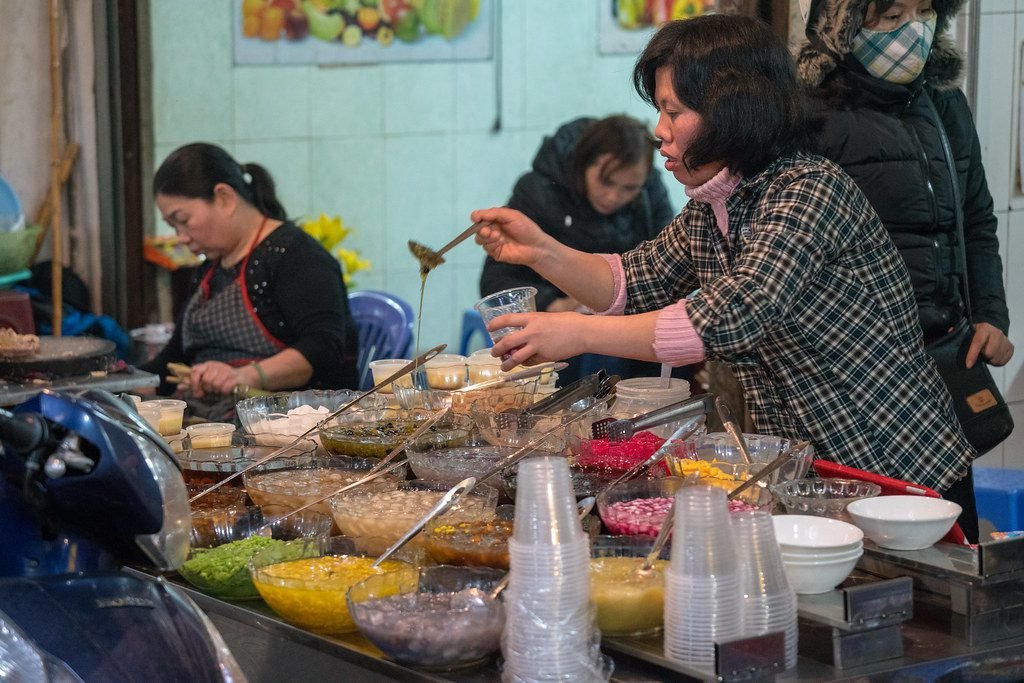
The beauty of Vietnamese cuisine lies in its regional diversity, making it a highlight of any culinary tour. Northern Vietnam, centered around Hanoi, offers hearty, subtle flavors with famous dishes like pho bo and bun cha.
Central Vietnam, including Hue and Hoi An, presents more complex, spicier cuisine with imperial influences. Southern Vietnam, anchored by Ho Chi Minh City, delivers bold, sweet flavors with fresh herbs and vibrant colors.
Key Benefits of Taking Food Tours in Vietnam:
- Safety and Hygiene Guidance: Local guides know which street vendors maintain the highest standards, helping you avoid common travel stomach issues while enjoying authentic experiences.
- Language Bridge: Your guide translates not just words but cultural context, explaining ingredients, cooking methods, and the social significance of different dishes.
- Hidden Locations: Access to family-run establishments and local spots that don’t appear in guidebooks or translation apps.
- Culinary Education: Learn to identify fresh ingredients, understand preparation techniques, and discover the history behind each dish.
- Cultural Context: Understand how meals fit into Vietnamese daily life, from market culture to dining etiquette.
Top Cities for Food Tours in Vietnam
Hanoi: The Culinary Heart of Northern Vietnam
Hanoi’s food scene represents the sophisticated, subtle flavors of northern Vietnamese cuisine. The city’s Old Quarter becomes a living restaurant after sunset, with tiny plastic chairs spilling onto sidewalks and the aroma of grilled meats, fresh herbs, and steaming broths filling the air.
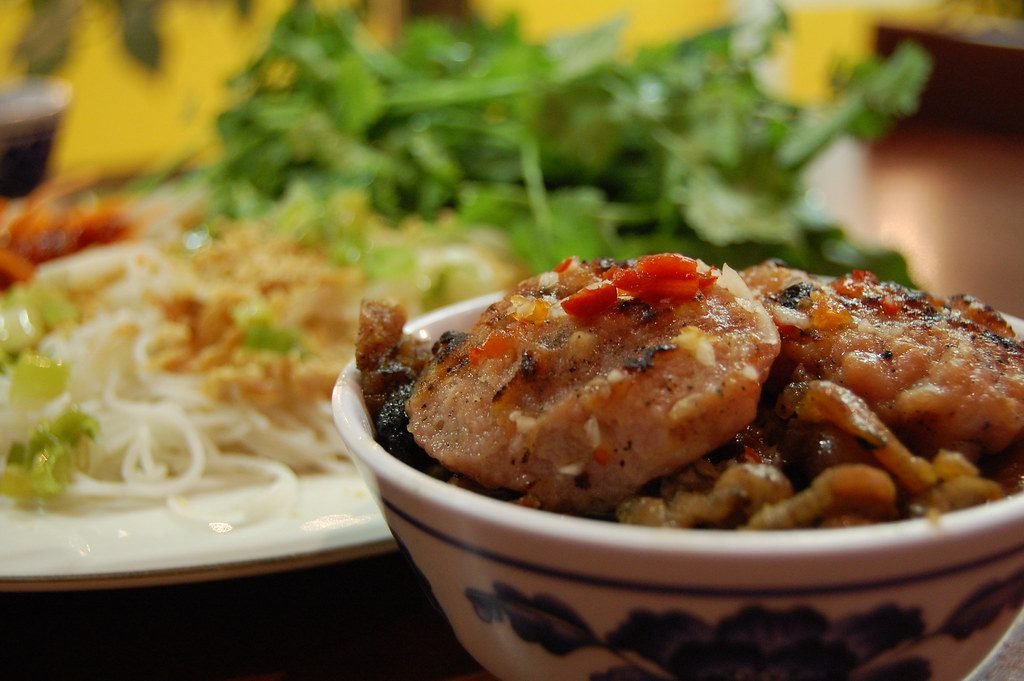
Must-Try Hanoi Food Tour Experiences:
Street Food Walking Tours typically last 3-4 hours and cost between $35-65 per person. These tours usually include 6-8 different food stops, covering classics like:
- Pho Bo: The iconic beef noodle soup that varies significantly from tourist versions
- Bun Cha: Grilled pork with rice noodles, famously enjoyed by President Obama
- Banh Mi: Vietnamese sandwiches with local variations
- Egg Coffee: Hanoi’s signature drink invented in the 1940s
- Bia Hoi: Fresh beer served at street-side establishments
Motorbike Food Tours offer a more adventurous experience, lasting 4-5 hours at $45-85 per person. These tours combine sightseeing with eating, taking you to markets, family homes, and authentic local spots while navigating Hanoi’s bustling traffic safely with experienced drivers.
Market and Cooking Combination Tours (5-6 hours, $60-95) start with early morning market visits where you select ingredients, followed by hands-on cooking classes and meals with local families.
Ho Chi Minh City (Saigon): Southern Flavors and Urban Energy
Ho Chi Minh City’s food tours capture the bold, vibrant flavors of southern Vietnamese cuisine. The city’s energy translates directly to its food scene, with night markets, street corners, and alleyways transforming into dining destinations after dark.
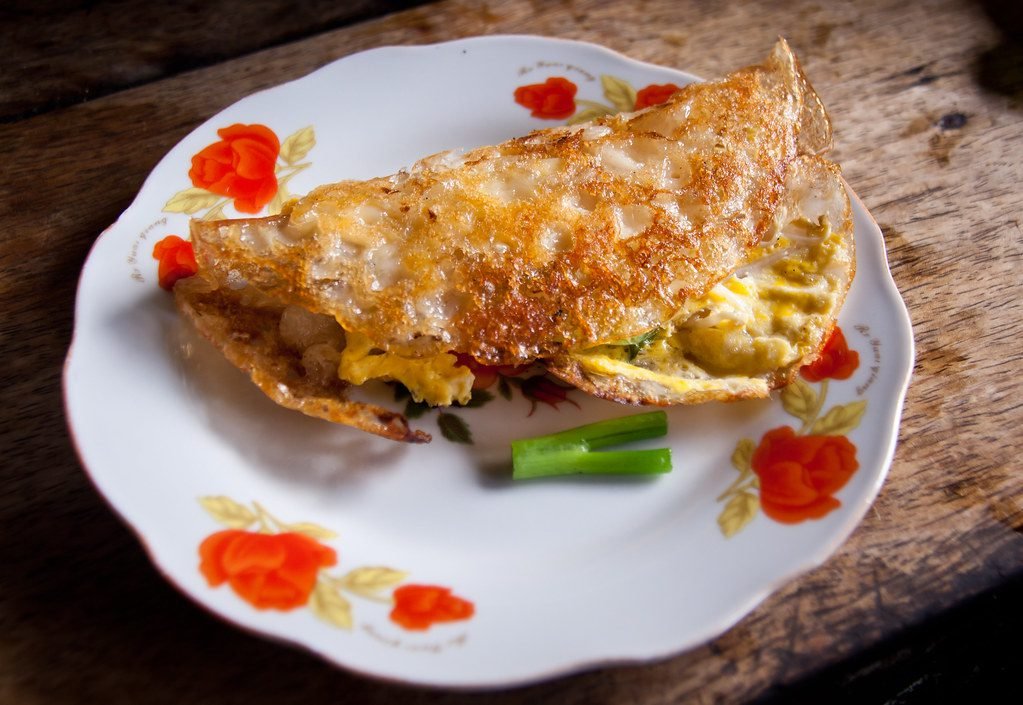
Essential Saigon Food Tour Highlights:
The XO Foodie Tour, voted among the world’s top food tours by Forbes Magazine, combines sightseeing with culinary experiences over 4.5 hours ($65-85). This tour strategically spaces food stops with cultural sites, allowing your stomach to reset between tastings.
District 1 Walking Food Tours focus on the city center’s diverse offerings, typically including:
- Com Tam: Broken rice dishes with grilled meats
- Banh Xeo: Crispy pancakes filled with shrimp and bean sprouts
- Vietnamese Hot Pot: Interactive dining experiences
- Che: Sweet dessert soups perfect for tropical weather
- Vietnamese Coffee: Both traditional and innovative preparations
Motorbike Street Food Adventures ($50-75) take you beyond tourist areas to residential districts where locals eat, offering authentic experiences in family-run establishments.
Hoi An: UNESCO World Heritage Flavors
Hoi An’s unique position as a historical trading port created a distinctive cuisine that blends Vietnamese, Chinese, and Japanese influences. The ancient town’s food tours offer culinary experiences unavailable anywhere else in Vietnam.
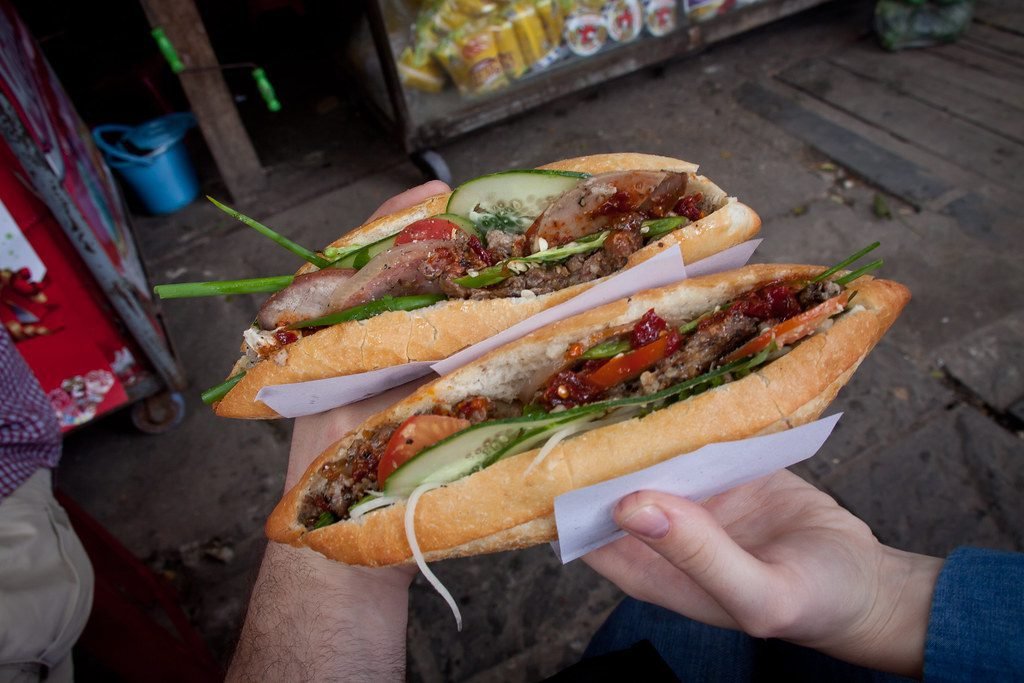
Signature Hoi An Food Tour Specialties:
- Cao Lau: : Unique noodles that can only be authentically made in Hoi An using water from specific local wells, showcasing the taste of Vietnam.
- White Rose Dumplings: Delicate steamed dumplings shaped like roses
- Banh Mi Hoi An: Banh Mi Hoi An is a must-try on your Vietnam food tour
- Mi Quang: Turmeric-colored noodles with shrimp and pork
- Hoi An-Style Chicken Rice: Fragrant rice with poached chicken
Evening Lantern Food Tours combine the town’s magical atmosphere with culinary exploration, typically lasting 3-4 hours ($45-70).
Hue: Imperial Cuisine and Royal Flavors
Hue’s food tours offer glimpses into Vietnam’s imperial past through refined, complex dishes originally prepared for royal courts. The city’s cuisine emphasizes presentation, subtle flavors, and artistic preparation.

Hue Imperial Food Tour Highlights:
- Bun Bo Hue: Spicy beef noodle soup distinct from northern pho
- Banh Khoai: Hue-style crispy pancakes
- Nem Lui: Lemongrass skewers with unique wrapping techniques
- Royal Court Dishes: Multi-course meals reflecting imperial traditions
Specialized Food Tour Types
Cooking Class Combinations
Many food tours in Vietnam include hands-on cooking components, offering deeper engagement with Vietnamese cuisine. These experiences typically follow this format:
- Market Tour (1-2 hours): Visit local markets with guides who explain ingredients, negotiation techniques, and seasonal availability
- Preparation Session (2-3 hours): Preparation Session for learning how to create traditional Vietnamese dishes.
- Cooking Experience (2-3 hours): Prepare 3-5 complete dishes under expert guidance
- Feast (1 hour): Enjoy your creations with fellow participants and local hosts
Top Cooking Class Food Tour Locations:
- Red Bridge Cooking School (Hoi An): Countryside setting with organic gardens
- Hanoi Cooking Centre: Urban cooking with apartment-style kitchens
- Saigon Cooking Class: Rooftop venues with city views, perfect for a culinary tour of the city.
Vegetarian and Vegan Food Tours
Vietnam’s Buddhist influences and abundant fresh produce make it surprisingly vegetarian-friendly. Specialized plant-based food tours highlight:
- Buddhist Temple Cuisine: Elaborate mock meat dishes and creative vegetable preparations
- Fresh Spring Rolls: Made with seasonal vegetables and herbs
- Vegetarian Pho: Rich broths made from vegetables and spices
- Tropical Fruit Experiences: Seasonal fruit tastings and preparation techniques
Premium and Luxury Food Tours
High-end food tours in Vietnam combine street food authenticity with premium service, often including a taste of Vietnam‘s best food:
- Private transportation with professional drivers
- Exclusive restaurant access to establishments not open to general public
- Celebrity chef encounters and cooking demonstrations
- Wine and beverage pairings with Vietnamese and international selections, including some of the best food from the region.
- Cultural performances accompanying meals
These tours typically range from $150-300 per person but offer unparalleled access and personalized experiences.
Regional Specialties and Seasonal Considerations
Northern Vietnam (Hanoi Region)
Best Time: October-April (cooler, drier weather) Signature Flavors: Subtle, balanced, less spicy Must-Try: Pho, bun cha, banh cuon, egg coffee
Central Vietnam (Hue, Hoi An, Da Nang)
Best Time: February-August (avoiding typhoon season) Signature Flavors: Complex, moderately spicy, artistic presentation Must-Try: Cao lau, mi quang, bun bo Hue, white rose dumplings
Southern Vietnam (Ho Chi Minh City, Mekong Delta)
Best Time: December-April (dry season) Signature Flavors: Bold, sweet, fresh herbs, coconut-based Must-Try: Com tam, banh xeo, hu tieu, fresh coconut desserts
Food Safety and Health Considerations
Vietnam’s street food culture requires some awareness of safety practices, though serious illness is relatively rare when following basic guidelines:
Safe Eating Practices:
- Choose vendors with high turnover (fresh ingredients)
- Observe local customers – busy stalls usually maintain better standards
- Ensure hot foods are served steaming hot
- Avoid raw vegetables unless you trust the washing methods
- Stick to bottled or properly filtered water
Common Dietary Restrictions:
- Gluten-Free: Rice-based dishes are naturally gluten-free, but soy sauce and some seasonings contain gluten
- Dairy-Free: Most Vietnamese cuisine is naturally dairy-free
- Nut Allergies: Peanuts are common in Vietnamese cooking
- Spice Sensitivity: Southern cuisine tends to be spicier than northern dishes
Pricing Guide and Value Comparison
Budget Food Tours ($25-45)
- Group walking tours (8-15 people)
- 3-4 food stops
- 2-3 hours duration is typical for a city tour focusing on local food.
- Basic guide service
- Popular areas only
Mid-Range Food Tours ($45-85)
- Smaller groups (4-8 people)
- 5-7 food stops
- 3-4 hours duration
- Experienced guides with cultural context
- Mix of popular and hidden locations
- Some transportation included
Premium Food Tours ($85-150)
- Private or very small groups
- 6-10 food stops
- 4-6 hours duration
- Expert guides with culinary backgrounds
- Exclusive access to special locations enhances your Vietnam tour experience.
- Transportation and beverages included
Luxury Food Tours ($150-300+)
- Completely private experiences
- Customized itineraries
- Professional chef guides
- High-end restaurants mixed with street food
- Premium transportation
- Cultural activities included
Booking Tips and Best Practices
When to Book
- Peak Season (November-March): Book 2-3 weeks in advance
- Shoulder Season (April-May, September-October): 1-2 weeks advance booking
- Rainy Season (June-August): Can often book same-day or next-day
What to Look For
- Small group sizes (maximum 8 people for personalized experience)
- Local guides with English proficiency and cultural knowledge
- Flexible dietary accommodations
- Insurance and safety protocols
- Transparent pricing with no hidden fees
- Authentic locations rather than tourist-oriented restaurants
Red Flags to Avoid
- Tours with no dietary restriction accommodations
- Guides who don’t speak your language fluently
- Extremely cheap prices (often indicate poor quality or hidden costs)
- No cancellation policy
- Tours that only visit tourist-oriented restaurants
Planning Your Vietnamese Food Tour Adventure
Pre-Tour Preparation
- Communicate dietary restrictions clearly when booking
- Research basic Vietnamese food terminology
- Prepare for different eating styles (chopsticks, communal sharing)
- Pack comfortable walking shoes and weather-appropriate clothing
- Bring cash in Vietnamese dong for tips and extra purchases
During Your Tour
- Ask questions about ingredients, preparation methods, and cultural significance
- Take photos but respect vendor privacy and local customs, especially when enjoying traditional Vietnamese dishes.
- Pace yourself during the Vietnam food tour to fully enjoy the local food. – Vietnamese meals often include many small portions.
- Engage with other participants for shared experiences and recommendations
- Keep an open mind about unfamiliar flavors and textures
Post-Tour Activities
- Revisit favorite locations independently
- Try cooking dishes you learned about at your accommodation
- Share experiences with other travelers for mutual recommendations
- Purchase ingredients from local markets to take home
Sustainable and Responsible Food Tourism
Choose food tours that support local communities and sustainable practices:
Supporting Local Communities
- Family-owned establishments: Tours that patronize local families rather than tourist-oriented businesses
- Fair wages: Companies that pay guides and vendors fairly
- Cultural respect: Tours that explain customs and encourage respectful behavior
Environmental Considerations
- Minimal packaging: Tours that encourage reusable containers and minimize waste
- Seasonal ingredients: Experiences that highlight local, seasonal produce
- Walking tours or shared transportation options are essential for exploring the seafood delicacies of the area.
Cultural Sensitivity
- Religious respect: Understanding when and where certain foods are appropriate
- Local customs: Learning proper eating etiquette and social behaviors
- Photography ethics: Asking permission before photographing people or private establishments
Beyond the Tour: Continuing Your Culinary Journey
Cooking at Home
Many travelers want to recreate Vietnamese flavors at home. Essential ingredients to source internationally include:
- Fish sauce (nuoc mam) – the foundation of Vietnamese flavor
- Rice paper is a key ingredient in many unique food dishes you’ll encounter on a culinary tour. for fresh spring rolls
- Vietnamese herbs: cilantro, mint, Thai basil
- Rice noodles in various widths
- Tamarind paste for sour flavors
Recipe Resources
- Tour guides often share family recipes
- Local cooking schools provide recipe cards
- Vietnamese cookbooks by Andrea Nguyen and Luke Nguyen offer authentic techniques
- Online communities share regional variations and modern adaptations
Cultural Connections
Food tours often create lasting connections with local people. Many travelers:
- Exchange contact information with guides for future visits
- Connect with cooking class instructors for advanced lessons
- Build relationships with vendor families for authentic experiences
- Join online communities of Vietnamese food enthusiasts
Conclusion: Your Vietnamese Culinary Adventure Awaits
Food tours in Vietnam offer far more than simple dining experiences – they provide cultural immersion, historical education, and personal connections that transform ordinary travel into extraordinary adventure.
Whether you choose the subtle sophistication of Hanoi’s street corners, the bold flavors of Saigon’s bustling markets, the unique heritage dishes of Hoi An’s ancient streets, or the imperial refinement of Hue’s royal cuisine, each Vietnamese food tour offers insights into the heart and soul of this remarkable country.
The key to exceptional food tour experiences lies in choosing authentic, locally-operated tours with knowledgeable guides who can bridge cultural gaps and provide access to genuine local experiences.
By following the guidelines and recommendations in this comprehensive guide, you’ll be well-prepared to select food tours that match your interests, dietary needs, and travel style.
Remember that Vietnamese food tours are not just about the food – they’re about understanding how cuisine connects communities, preserves traditions, and creates the social fabric that makes Vietnam such a compelling destination.
Every bowl of pho tells a story, every family recipe carries history, and every shared meal creates connections that extend far beyond your visit.
Your Vietnamese culinary adventure awaits. Choose your tours thoughtfully, approach each experience with curiosity and respect, and prepare for flavors, stories, and memories that will last a lifetime.
FAQs
What is the best city in Vietnam for food tours?
Ho Chi Minh City and Hanoi are the top choices, offering diverse street food scenes and guided tours that highlight unique food experiences. Hoi An is also popular for its unique local dishes and relaxed vibe.
Are Vietnamese food tours suitable for vegetarians?
Yes, many food tours offer vegetarian options. Be sure to inform your guide in advance so they can accommodate your dietary preferences.
How much do food tours in Vietnam typically cost?
Prices range from $20 to $60 USD, depending on the city, duration, and whether it’s a group or private tour. Some premium tours may include transportation and drinks.
Do I need to book a food tour in advance?
While you can find last-minute tours, it’s best to book in advance, especially during peak tourist seasons, to secure a spot with reputable guides.
Are food tours in Vietnam safe for tourists?
Yes, most food tours are very safe, especially with experienced local guides. Stick to well-reviewed tours and follow hygiene tips like using hand sanitizer before eating.


